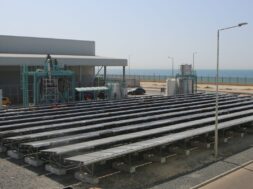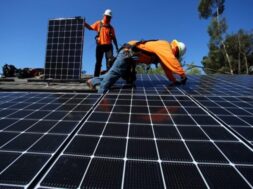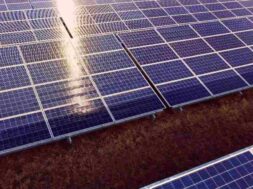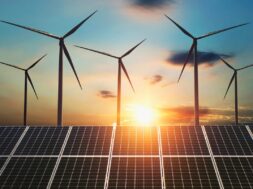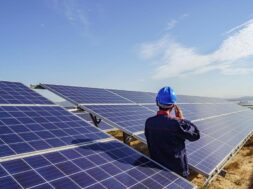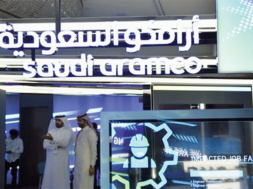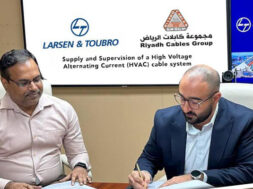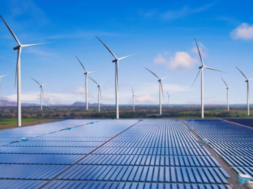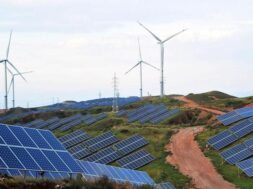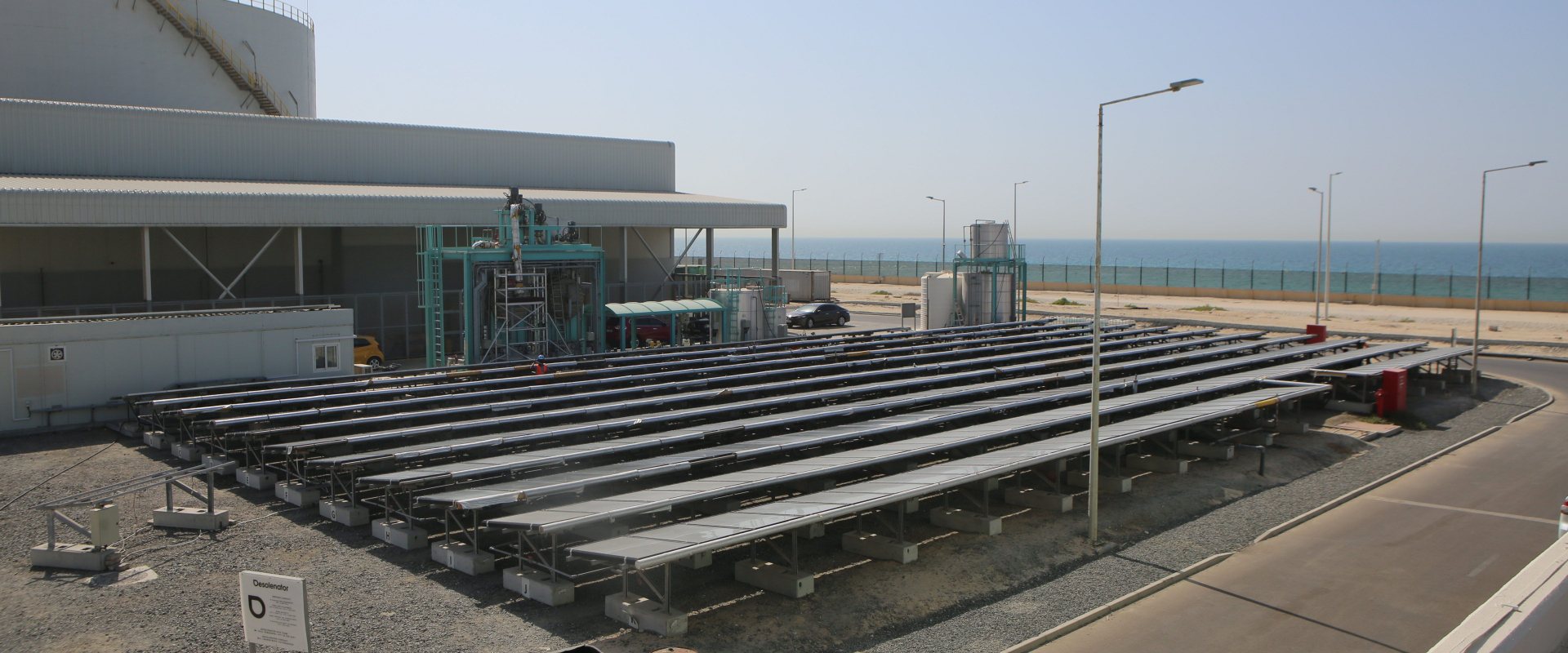
In September the Dubai Electricity and Water Authority (DEWA) signed a partnership agreement with Desolenator to further develop the latter’s desalination system. Desolenator’s approach of flash distillation powered by photovoltaics plus solar thermal is very different to the industry mainstream of Reverse Osmosis (RO).
The UAE gets 90% of its drinking water and 42% of total water from desalination. The country produces at least 14% of global desalinated water, almost as much as Saudi Arabia or the US, despite having a population of only 10 million. So receiving an endorsement from the UAE, even as the country also pursues multi-billion developments of today’s RO technology, is a big win for Desolenator.
Last month we at Rethink spoke to Alexei Levene, Desolenator’s co-founder and Commercial Director. One of the first questions posed to him was “why did Dubai commission a system from you, was it cost-competitive or was it more about the sustainability?” Which is a rather blunt and unfair frame to push on a startup which has plenty of room to lower costs with economies of scale.
Currently, according to DEWA, the 1,000-liter-per-day Jebel Ali project built as a pilot for Desolenator’s design produces water at $0.02 per liter – so $20 per cubic meter. Levene is confident that will change as Desolenator’s projects scale – “our Levelized Cost of Water (LCOW) will be under $1 per cubic meter,” he says, while admitting “it takes time to build our industrial-scale system.”
At the opposite end of the scale is the massive Taweelah RO plant, commissioned this year in Abu Dhabi, which weighs in at a production capacity of 900 million liters per day with an investment cost of around $1 billion. It produces water at a tariff of $0.5 per cubic meter, and even lower tariffs have been agreed since, but this is off the back of the extremely low Gulf region power prices, fueled by local gas and oil.
Besides cost, sustainability was the second reason for DEWA’s backing. Reverse Osmosis is another electrification burden for the currently fossil-fuel dominated grid, and it is inherently stuck with toxic brine discharge courtesy of various chemicals used in its filters.
But the surprising third motive was resource security. “The main driver in this region, in the UAE, especially post-Covid, is around water security and food security,” says Levene. “When Covid happened they had problems bringing in food, and there is no water here.” It’s surprising to think of a fabulously wealthy state having any issues with trade – but this is a place where almost everything, even labor, must be imported “en masse” and fossil fuels exported to pay for all the imports.
Desolenator’s system fits the bill, as it’s low maintenance and doesn’t need fuel. “Now there’s an increasing focus on regulations, there’s COP28 to be hosted here next year. The name of the game now is diversification. If you look at the investment strategies for 2030 and 2040 in places like the UAE and Saudi Arabia, they know oil and gas won’t last, they want tourism, industry and R&D to come in to replace it. And water and food security, along with the fuel security they already have, are the basis for everything else.”
Asked about the scale of a typical Desolenator plant, Levene answers that the company has a modular system, each module having an output of 250,000 liters a day – in contrast with the 1,000-liter pilot project. These modules can be stacked into a group of ten or twenty in one installation, serving a small town at most from one project. “That’s where we’re focusing, on businesses with assets exposed to water crisis, and on communities – such as islands which are importing diesel to run a Reverse Osmosis system – we can provide them with water independence as long as they have good sunshine and a source of water.”
Levene says the company is agnostic about who purchases their water, but drinking water is clearly the big one. He also mentions breweries, vertical farming, with a special note for electrolyzers – “Eventually green hydrogen will have to examine the greenness of how they source their water.”
Desolenator has previously worked on two smaller-scale products – a household system with 20 liter output per day, and a phone-box sized “kiosk” with 100 liters to 200 liters of output a day. These were stepping-stones to the large modular system, but might be returned to in future.
Levene prefers to talk about the overall vision – but we’d better describe Desolenator’s technology at this point. Desolenator is returning to thermal flash distillation, the ‘old’ technology which has been overtaken by Reverse Osmosis over the past few decades. Flash distillation has been falling by the wayside due to its high power demand, but this time it’s being paired with a combined photovoltaic-thermal power source which addresses that weakness.
Desolenator designs its own photovoltaic thermal panels which are assembled by a Dubai-based subcontractor which is managed by Desolenator. This solution was developed over five years of R&D, and the company has patents covering these photovoltaic thermal panels, as well as a hot water thermal storage system and integration with a desalination system. Levene is cagey about details but also mentions a thermal battery using a “waxy substance similar in function to paraffin” as a phase change material.
As Levene describes it, “We’re capturing the 15% electrical conversion you normally would, plus 45% of what would be waste heat for normal photovoltaics in a desert, so four times the power. Seawater is flashed under pressure in what Levene calls “a big kettle, similar to how one distils vodka. We don’t use any harmful chemicals – only an anti-scalant made from sugarcane.” Levene’s 15% is a little unfair on modern panels, but he’s considering the thermal efficiency loss which solar modules suffer when heated, especially in the desert – in this system they’re cooled instead.
The significance of the thermal storage is that the system can keep working through the night, something that RO can only do if it’s using fossil fuels or shelling out for a battery energy storage system. Levene seems most interested in the system being independent from the grid – he does mention the possibility of grid connection and says that it could draw from and contribute to the grid, but this would be drawing at night-time and contributing at midday, not particularly worthwhile financially in a future with mass photovoltaic grid participation. What’s more appealing is the idea of being situated to heat-generating infrastructure such as generators or electrolyzers – that power can be harnessed with a heat exchanger.
“So this is low-cost, which is needed in the desalination industry, and it’s sustainable, and reliable.” Levene continues. “All of the investment in the past 15-20 years has been in membrane technology – it works, it’s been coming down in price, but it’s just not sustainable. And that’s killed off thermal desalination for the most part and prior to that there was multi-stage flash and multi-effect technologies that are thermal, but Reverse Osmosis (RO) was able to push down the cost.” Says Levene, describing his view of the industry. “We’re in an industry dealing with our most important commodity, but also our most undervalued commodity, so the cheap polluting option won out.”
“Something like 55% of cost in an RO project’s lifespan is energy” observes Levene, and with that you have the classic contrast between renewables and conventional energy – renewable project costs are mostly capex, whereas conventional costs are mostly fuel.
RO’s fuel OPEX cost is joined by its second biggest cost, also OPEX, that of maintenance by skilled engineers. For Desolenator, maintenance is simple, there’s no fuel – almost all the cost is upfront, which is something of a problem for financing. The business model leveraged to pay for those capital costs will be “water as a service,” effectively acting as a utility with a monthly fee to be paid.
In terms of specific financial backing Levene is willing to share that Desolenator has one national government giving it 75% of project equity, a financial company backed by insurance companies willing to give 80% debt at project level, another private company willing to give 100% debt repayable over ten years, with banks, governments and DFIs all being familiar with this kind of asset-backed model.
Levene says he’s not aware of any other companies doing the same thing as Desolantor, which he attributes to the financial barrier to entry – “I’ve done six startups in my life in different areas, and this is a beast. Nobody funds the research, all the money’s in the project, so you need to hustle to get your technology to market, which we’ve been able to do, but it’s a high barrier.”
Levene has plenty of familiarity with tech startups, so when he says “We’re competing for the same money that can go to some tech startup which can run out of a few programmers’ university rooms,” he’s speaking with experience, not envy. Levene’s previous works include a UK-based crowdfunding platform for renewable projects in the UK, which was the first of its kind to be regulated in Europe. With a hardware-based startup, especially one dealing with water – Levene repeatedly refers to water as “undervalued” – the financing is much harder.
Returning to the question of pollution, Levene lays out the sustainability problems with Reverse Osmosis. Firstly, it uses fossil fuels. Levene acknowledges that RO systems have added photovoltaics, but derogates this as mere retrofitting and argues that a dedicated lithium storage pushes up costs massively for RO. Even so, this isn’t an inherent feature of RO, so really the point here is ‘only’ that Desolenator’s approach will hasten the energy transition by using renewables on its own initiative instead adding itself to the burden to be transitioned by the grid.
The intractable sustainability problem with Reverse Osmosis is toxic pollutants in the brine discharge, typically pumped out to sea, which Levene portrays as a serious concern – “the chemicals used in that process are really, really nasty, which is philosophically and practically an issue that’s increasingly falling afoul of regulations in places such as California – in many cases it’s becoming necessary to take that waste water and truck it out of state.”
In contrast, Levene says Desolenator’s waste brine is “relatively clean, no chemicals in it – we can blend it with seawater for ocean-neutral disposal, or potentially we can even ultra-concentrate it into salt and have zero liquid discharge.” Levene makes it clear that the usable salt output is still something being pursued in the R&D phase.
Another contrast between Desolenator and RO is that RO has to be calibrated to the impurity of the water input – “If you’re taking water from a borehole and its salinity goes up, then you have to re-engineer your osmosis, while we don’t care because we’re using a thermal process. We have a preference for more challenging types such as seawater” says Levene, naming brackish and saline aquifers as well. Most of the UAE’s aquifers are saline, and that salinity can change (likely worsen) over time.
Beyond the UAE, Desolenator is looking to expand across the Gulf region, and into California, South Asia and Australia. Although Desolenator’s process doesn’t use particular high temperatures, it seems to benefit a great deal, in terms of financial viability, on not just good but even excellent irradiation conditions. That’s judging by a couple of Levene’s comments – one that the company is only looking at tropical and subtropical contexts, the other that “Northwest Australia is a slam dunk for us” – that area, is the sunniest part of Australia. Of course, the other reason to only look at subtropical areas is because that’s where there are deserts and insufficient water supply – and the other appeal of Australia’s Pilbara region is that it will become a hydrogen electrolysis hub, which will make good use of Desolenator’s distilled water.
